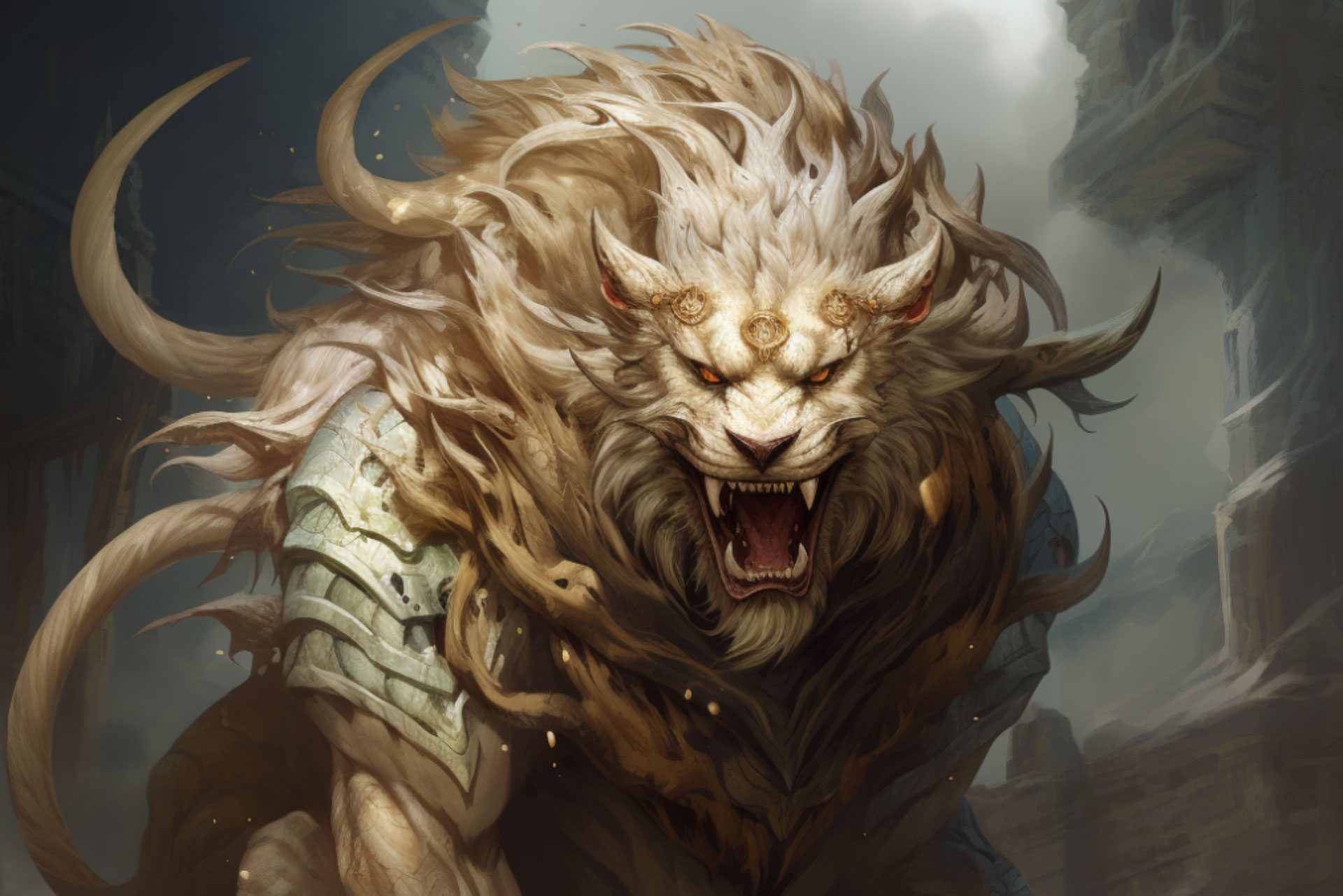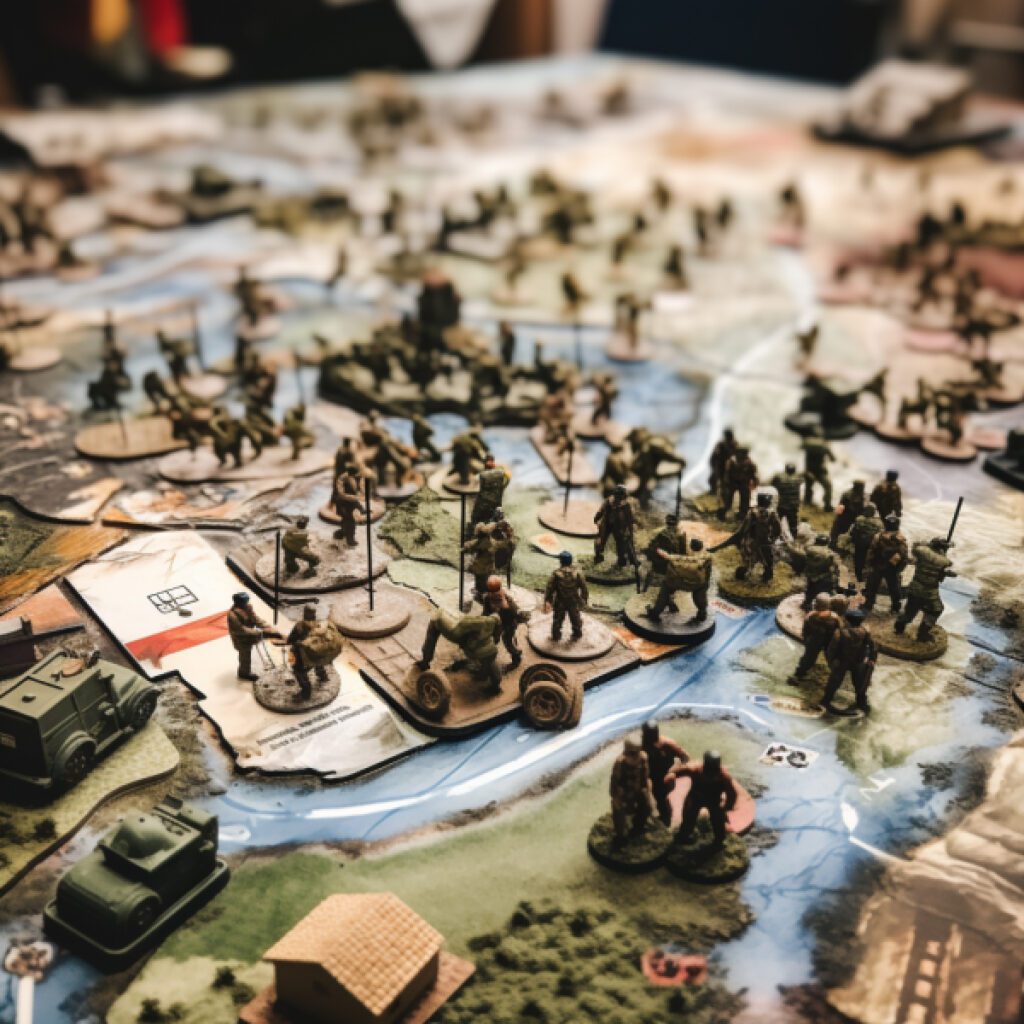
While these exercises were undoubtedly intricate, they often seemed like elaborate puzzles with predetermined outcomes rather than dynamic platforms for strategic thinking. The limitations were glaring: scripted scenarios, a lack of real-time decision-making, and limited interaction with the evolving situations. These exercises appeared to be more about going through predetermined motions rather than truly understanding and adapting to the changing contours of conflict. It was as if we were actors reciting our lines in a play, rather than strategists or innovators adapting to a fluid battlefield.
This persistent gap between expectation and reality was not just a personal frustration; it became clear to me that it represented an institutional shortfall. It signaled a missed opportunity to leverage wargaming as a powerful tool for honing real-world decision-making skills and fostering strategic acumen across the military leadership.
As the initiatives to launch the Air University Innovation Accelerator (AUiX) and The Eagle Institute gained momentum, a window of opportunity appeared. Here was the chance to rectify a long-standing deficit, not just for myself but for the entire defense community. The birth of these organizations provided the perfect backdrop for a transformative project: the development of “The Chimaera: Wargaming and Strategy Suite.”

Chimaera is designed to be more than just another wargaming exercise; it aims to be a holistic training and research ecosystem that bridges the gap between academic rigor and military application. It is intended to be a living, breathing platform where scenarios evolve in real-time, allowing participants to interact, adapt, and most importantly, to think.

By blending state-of-the-art technology, interdisciplinary academic research, and practical military experience, Chimaera aims to redefine what wargaming can be and do. It endeavors to equip our military leaders with the intellectual tools and strategic foresight needed to navigate the complex security landscapes of today and tomorrow.
In a career that has often felt like a search for the wargaming experience I had always imagined, Chimaera represents the realization of that quest. It’s a labor of passion, informed by years of hands-on experience and a desire to elevate military wargaming from mere simulation to a dynamic crucible of strategy and innovation.
What is Chimaera?
Mythological Context
In Greek mythology, the Chimaera is a monstrous creature often depicted as a lion with a goat’s head protruding from its back and a serpent for a tail. It’s a hybrid creature that has been used symbolically over the years to represent the concept of an impossible or horrifying hybrid—a blend of different elements that shouldn’t naturally exist together.
Biological Context
In biology, a chimaera (or chimera) is an organism containing tissues or cells of two or more different genotypes. For example, a human receiving an organ transplant becomes a chimaera because they have some genetic material in their body that is not their own.
Technological Context
In the fields of technology and gaming, Chimaera might refer to a software or platform. For example, there was an initiative to develop a Chimaera blockchain specifically designed for decentralized game development.
Star Wars
In the Star Wars Expanded Universe, now known as “Legends” since the Disney acquisition of the franchise, the Chimaera is an Imperial II-class Star Destroyer. The ship is most famous for being the flagship of Grand Admiral Thrawn, one of the most brilliant military strategists in the Star Wars universe. Thrawn is a character who was created by author Timothy Zahn and first appeared in the 1991 novel “Heir to the Empire,” which was the beginning of a trilogy that brought new life to the Star Wars literary landscape

Historical Narrative: The Utility of Wargaming and the Importance of The Chimaera: Wargaming and Strategy Suite:
The Dawn of Wargaming: Prussian Innovation
Wargaming traces its roots back to Prussia in the early 19th century with the invention of “Kriegsspiel,” a tabletop simulation developed to train military officers. It gained prominence when Prussian officers employed insights derived from wargaming during conflicts like the Franco-Prussian War of 1870-71. The victory against France, which led to German unification, was, in part, a testament to the utility of wargaming in strategic military planning.
World War II: Allies and Operational Planning
During WWII, wargaming was employed extensively by the Allies for planning operations, such as the D-Day landings. Simulation games helped forecast the possible outcomes of different strategies, taking into account variables like weather, troop strength, and logistical challenges. It enabled the planners to see potential weaknesses in the strategies and refine them, contributing to the ultimate success of Operation Overlord.
Cold War: Escalation and De-escalation Strategies
The Cold War era saw the U.S. military and think tanks use wargaming to simulate various nuclear escalation and de-escalation scenarios. Insights from these games helped shape doctrines like MAD (Mutually Assured Destruction) and policies around first-strike capabilities. It facilitated an understanding of the strategic balance required to prevent nuclear catastrophe.
Modern Applications: Counterterrorism and Asymmetric Warfare
In the 21st century, wargaming has been adapted to simulate counterterrorism operations and asymmetric warfare. Games like the U.S. Army’s “UrbanSim” have provided invaluable insights into managing complex civilian-military dynamics in urban environments. Such applications have informed real-world operations, saving both civilian and military lives.
The Need for The Chimaera: Wargaming and Strategy Suite

Complexity of Modern Warfare
Today’s conflicts involve not only traditional military forces but also non-state actors, cyberwarfare, and hybrid tactics. There’s a growing need to simulate multi-domain operations that include air, land, sea, cyber, and even outer space. The Chimaera suite’s multidisciplinary approach is essential for simulating such complex environments.
The Information Age
With the advent of big data and AI, wargaming can now incorporate real-time data analytics. This makes it possible to model highly complex scenarios with numerous variables, enhancing the predictive value of simulations. The Chimaera suite’s state-of-the-art technology stack addresses this evolving need.
Academic-Military Synergy
Combining scholarly research and military strategy enhances the robustness of wargaming exercises. The Chimaera suite, situated at Air University’ Eagle Institute, offers a unique platform for the integration of academic rigor and practical military strategy, thereby producing military leaders who are not just tacticians but also strategic thinkers.
Ethical and Social Implications
Understanding the human terrain and the ethical dimensions of warfare is increasingly important. The Chimaera suite allows for scenarios that incorporate these elements, thereby preparing leaders for the moral complexities of modern conflicts.
National Security and Policy
Finally, well-designed wargaming exercises can inform national policy by providing empirical data on potential outcomes of various strategic choices. The Chimaera suite aligns wargaming activities with broader national security objectives, making it a critical asset for policy formulation.
The history of wargaming showcases its utility in shaping successful military strategies and influencing positive outcomes in various conflicts. In an era of rapid technological advances and complex geopolitical dynamics, The Chimaera: Wargaming and Strategy Suite serves as an essential tool for preparing today’s military leaders for the challenges of tomorrow.
CHIMAERA MISSION STATEMENT
Chimaera: Wargaming and Strategy Suite at Air University is committed to advancing the art and science of military strategy and decision-making through state-of-the-art wargaming, simulation, and interdisciplinary research. We aim to cultivate the next generation of leaders equipped with the intellectual acumen and strategic foresight to navigate complex security landscapes. By fusing academic rigor with practical applications, we foster a collaborative ecosystem that supports national defense objectives, contributes to scholarly discourse, and drives innovation in the field of strategic studies.”

This mission statement encapsulates:
- Commitment to Advancement: Highlights the suite’s dedication to evolving both the practical and theoretical aspects of military strategy.
- Focus on Education: Stresses the goal of preparing future military and strategic leaders.
- Interdisciplinary Approach: Notes the integration of academic disciplines to provide a comprehensive understanding of strategy.
- Practical and Academic Goals: Balances the needs for actionable insights and scholarly contributions.
- Collaboration: Underlines the importance of working together across different sectors and disciplines.
- Alignment with National Goals: Clarifies that the suite’s activities are aimed at supporting broader defense and security objectives.
BUILDING CHIMAERA
Preliminary Phase
1. Feasibility Study
- Scope: Define the scope of the wargaming and strategy suite. Is it meant for academic research, professional training, or both?
- Budget: Estimate the overall budget, taking into account both hardware and software needs, as well as staffing and maintenance.
- Stakeholder Analysis: Identify and engage key stakeholders including faculty, administration, and potential external partners.
2. Academic Alignment
- Curriculum Integration: Ensure the suite aligns with current academic programs related to strategy, leadership, and innovation.
- Research Opportunities: Evaluate how the suite can contribute to ongoing or future research initiatives.
Planning Phase
3. Team Formation
- Core Team: Form a team comprising experts in wargaming, strategy, IT, and project management.
- Advisory Board: Involve faculty members, industry experts, and even students to serve on an advisory board.
4. Infrastructure Planning
- Physical Space: Design the layout focusing on functionality, adaptability, and accessibility.
- Technology Stack: Decide on the software tools and hardware devices needed.
Execution Phase
5. Pilot Testing
- Scenarios: Develop a set of scenarios to be tested in the suite. Consider leveraging academic research in strategy and decision science for creating high-fidelity wargames.
- User Testing: Conduct initial rounds with a small user group, and iterate based on feedback.
6. Training and Development
- Training Modules: Develop specialized training modules for different user groups (students, faculty, external professionals).
- Staff Training: Train the staff to manage the suite effectively and to facilitate wargaming sessions.
Maintenance and Upgradation
7. Performance Metrics
- KPIs: Establish Key Performance Indicators to measure the suite’s effectiveness in terms of educational outcomes, research contributions, and user engagement.
8. Iterative Upgradation
- Feedback Loop: Create mechanisms for regular feedback from users and stakeholders.
- Technology Updates: Regularly update the technology and scenarios based on emerging trends in wargaming and strategy.
Outreach and Collaboration
9. Partnerships
- Academic Partnerships: Engage with other academic institutions for cross-university wargaming events.
- Industry Collaboration: Invite industry leaders to contribute to and participate in wargaming exercises.
10. Dissemination
- Research Papers: Publish findings and methodologies in academic journals.
- Workshops and Seminars: Host workshops, seminars, and conferences focused on wargaming and strategy.
Creating an unclassified wargaming suite within an academic setting like Air University involves multiple considerations—from technology infrastructure to intellectual property, and from educational objectives to interdisciplinary research. Here are some key elements to include:
CHIMAERA BUILDOUT
Physical Infrastructure
- Simulated War Rooms: Create rooms equipped with large screens, live-feed capabilities, and interactive tables for war games.
- Collaborative Spaces: Workstations and huddle spaces for smaller teams to discuss strategy.
- Briefing Rooms: Spaces for pre- and post-game analysis and discussions.
Technology Stack
- Wargaming Software: Include software specifically designed for military and strategic simulations.
- Data Analytics Tools: Tools for real-time data collection and analysis to evaluate game outcomes.
- Communication Systems: Encrypted channels for intra-team communication.
Scenario Libraries
- Historical Campaigns: Scenarios based on historical conflicts and operations.
- Hypothetical Situations: Future-oriented scenarios focusing on emerging threats and geopolitical shifts.
- Civil-Military Scenarios: Scenarios that involve coordination between military, governmental, and civilian entities.
Educational Resources
- Instruction Manuals: Guides for operating the wargaming systems and understanding the rules.
- Curriculum Guides: Educational resources for integrating the suite into academic programs.
- Research Archive: A collection of academic papers, reports, and publications on wargaming and military strategy.
Training Modules
- Basic Training: Introductory courses for those new to wargaming.
- Advanced Training: Specialized modules for strategy, tactics, logistics, and decision-making.
- Interdisciplinary Modules: Courses that blend military science with fields like geopolitics, ethics, and leadership.
User Support
- Facilitators: Trained personnel to guide participants through wargames.
- Tech Support: On-site technical support for troubleshooting.
- Analysts: Experts who can translate game outcomes into actionable insights.
Accessibility and Security
- User Authentication: Secure but easily accessible login procedures to ensure that only authorized individuals have access.
- Firewalls and Encryption: Security protocols to protect the integrity of the wargames without compromising their unclassified status.
Feedback Mechanisms
- Surveys and Questionnaires: Post-session evaluations to collect user feedback.
- Analytics Dashboard: Real-time dashboards to track Key Performance Indicators (KPIs).
Outreach and Collaboration
- Inter-Departmental Partnerships: Collaborate with other departments for multidisciplinary wargames.
- External Partnerships: Establish relationships with other academic institutions, governmental bodies, and industry stakeholders for broader perspectives and shared resources.
Documentation and Publication
- Case Studies: Detailed reports of specific wargames that yielded particularly significant insights.
- Academic Journals: Publish research findings, methodologies, and analyses in peer-reviewed journals.
IN THE END
Embarking on a project as audacious and complex as “The Chimaera: Wargaming and Strategy Suite” is not a task for the faint-hearted. We are acutely aware of the challenges that lie ahead, from garnering sufficient funding to coordinating between multiple organizations, each with its own agenda and constraints. Additionally, the ambition of this project inherently carries the risk of falling short. Yet, it is precisely the magnitude of the challenge that makes the endeavor worthwhile

In a world of fast-paced technological advancements and ever-shifting geopolitical landscapes, the shortcomings of existing wargaming platforms are no longer just inconveniences; they are liabilities. Traditional wargaming exercises, as valuable as they have been, lack the dynamism required to prepare our military leaders for the multi-faceted challenges of modern warfare. While the task of bridging this gap seems Herculean, it is not insurmountable.
Time, indeed, is of the essence, and the tendency to focus on short-term gains often obscures the vital importance of long-term strategic planning. Nevertheless, if we are to remain at the forefront of military readiness and national security, the investment of time, effort, and resources into Chimaera is not just advisable; it’s imperative.
What we have going for us is the collective will of dedicated professionals, both in academia and the military, who understand the stakes. We have an unprecedented opportunity to synergize diverse talents, technologies, and insights into a singular platform that can fundamentally alter the way we approach military strategy and education. With the right leadership in place, the momentum of this grand vision can be sustained and transformed into concrete action.
The journey ahead for Chimaera will undoubtedly be filled with hurdles, but the rewards have the potential to be transformative—not just for professional military education (PME) but also for the very fabric of our national security strategies. In the end, it is this promise of transformation that makes the endeavor not just a professional obligation but a national imperative.
As we chart this unexplored territory, the collective expertise and commitment of everyone involved will be our compass, guiding us through the challenges and toward a future where Chimaera is not just a reality but a cornerstone of military excellence and national security. With concerted effort and visionary leadership, we can ensure that this lofty ambition evolves into a tangible, invaluable asset for generations to come.


0 Comments